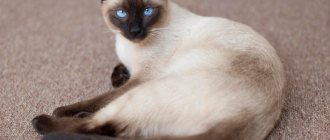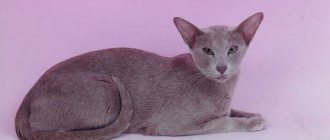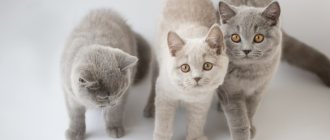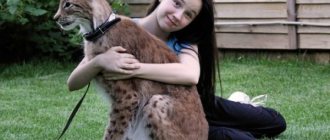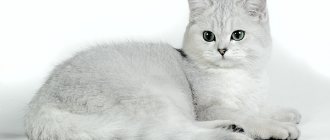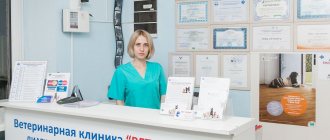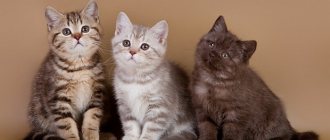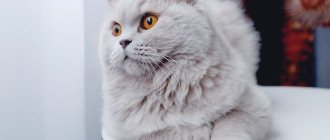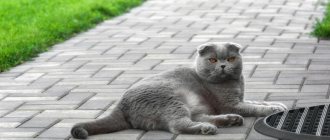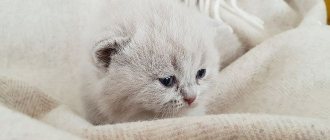The popularity of cats as pets has grown greatly in recent decades. This is due to a number of reasons, but the main one is the consolidation of cities and the growth of their population. Fewer and fewer people live in rural areas, but having moved to the city, people do not want to lose touch with nature and often get pets. And more often than not they turn out to be cats.
Why cats? The answer is simple: they are much cleaner than dogs and other domestic animals. In addition, they do not need to be walked several times a day, plus they are not so intrusive in behavior. A person who thinks about having a pet usually opts for a purebred animal. And for him, the question of how much a British kitten or another breed costs and what its price depends on comes first.
Rating of the most expensive cat breeds
Today there are more than 70 different breeds of cats in the world (according to the latest data from felinological organizations - 71). They are distinguished by color, eye shade, coat length, size, and character. Anyone can afford to buy some furry breeds. While there are varieties of domestic cats that not everyone can afford. So, let's figure out which cat breed is the most expensive.
Peterbald
This breed was bred in Russia at the end of the twentieth century. Pets of the St. Petersburg Sphynx breed are distinguished by their complete absence of hair. They occurred as a result of crossing 2 popular and expensive breeds: the Don Sphynx and Orientals (Oriental cats). Sometimes there is a small fluff on the animal’s body. The Peterbald's character is affectionate and friendly. As is the case with many other breeds, the cost of the St. Petersburg Sphynx depends on its class.
On average, the price of a kitten is about $700.
Scottish lop-eared
This breed of cat is quite common in our area. Its main feature (as the name suggests) is its forward-curved ears. By the way, Scottish Folds are my direct relatives - together with Scottish Straights, they descended from the same ancestor.
Such pets have a very reserved and calm character, love to play with their own toys, and quickly find common interests with other pets. On average, Scottish Fold kittens will cost you about $800. Of course, the specific price will depend on the pedigree of the animal, its gender and color.
average cost
So, knowing where to buy a purebred animal, it will be easier to determine its origin based on the price. Simple kittens that do not have documents confirming their origin will cost 100-200 dollars (5,700–11,500 rubles). But keep in mind that no one guarantees their breed, even if the seller verbally assures you of this.
But you can understand how much a British chinchilla kitten from purebred parents costs even from an advertisement on the Internet. The average price is 400-500 dollars (23,000-30,000 rubles), but keep in mind that such kittens are usually sold without the right to breed. In other words, as they age, they are supposed to be spayed or neutered to prevent them from being used as breeders. But they are ideal for the role of a pet.
If you intend to take part in exhibitions and possible breeding in the future, then be prepared to pay $1,000 (more than 55,000 rubles) or more for a kitten. In this case, you will be provided with all the necessary documents indicating the breed of the kitten, and a good breeder will always help with advice in the future.
The cost of kittens is indicated on the market average; depending on the demand in a particular region, it differs both up and down. There is often a waiting list for kittens from champion parents, so keep this in mind if you want to buy a future champion.
Persian
Persians attract people with their extraordinary appearance, sunken nose, kindness, and gullibility. Characteristics:
- body – strong, muscular;
- weight – up to 7 kg;
- price – 3-5 thousand rubles.
This is a calm and even passive animal that does not require much space or active games. The cat is calm and peaceful in nature and sleeps most of the day. She gets along with people, loves small children, and gets along in the same area with other pets. But Persians are picky when it comes to food and scrupulous in their daily care. Long hair has to be combed daily and sour eyes treated.
Do British Fold cats exist?
It is widely believed that the British Fold cat exists. However, this is not quite true. Scottish cats, close relatives of the British, are fold-eared. Kittens, the fruit of love between a Scotsman and a British mother (or vice versa), can indeed be born with oddball ears. But they no longer pretend to be purebred.
However, these animals continue to be in demand due to their quirky and cute appearance. On top of that, they are smart, curious, graceful and active.
Perhaps kittens with curled ears inherit the best traits of their parents. Cats are calm, attached to people and not prone to mischief.
The cross does not negatively affect the health or mental state of the animal. Unpretentiousness manifests itself even in childhood, because kittens from the first weeks of life learn to cope without outside help. However, fold-eared cats will not refuse communication and affection.
The owners of this miracle will have to pay increased attention to the ear area. Inspection for plaque and rashes should be carried out once every 14 days. But isn't caring for a pet a pleasure?
British
There are short-haired and long-haired varieties of the breed. The animal is elegant and graceful. Characteristics:
- body – large, muscular;
- weight – up to 8 kg;
- head – round, wide;
- the nose is slightly flattened;
- undercoat – thick;
- The standard color is blue, but in practice there are also rarer colors (tortoiseshell, tabby, cream, gold).
Animals are calm, tolerate loneliness, and become attached to one person. They behave aggressively with strangers and do not give in to their hands. The price of short-haired British is 3 thousand rubles, long-haired is a little more expensive.
How much do British cats weigh?
Due to their body structure, British people look compact at any age. The final weight is gained by 2-3 years. It is interesting that purrs of a single color are usually larger than their relatives with a pattern on their fur coat. That is, a lilac cat will weigh more than a tortoiseshell cat.
Males weigh about 5-8 kg. Neutered – 10-12 kg. Females are traditionally smaller than males. Their weight is 3-4 kg, and if sterilized, the weight can reach 7 kg.
To determine normal weight, you need to palpate the cat's subcutaneous fat layer. Normally, it is practically unnoticeable, and the ribs are not clearly felt. The intercostal spaces should not be closed. When stroking, the spine should be clearly palpable and not lost under the fat layer. British with a natural pattern on the back
Today there are about 200 colors of British cats. Some have remained since the appearance of the species, and some appeared thanks to the work of breeders.
Most representatives of the breed have a solid color. Exceptions include tortoiseshell kittens. This is nothing more than a mix of colors, which gives the animal an unusual appearance.
Tortoiseshell color
The color spots make up a mosaic pattern. It comes in two types. Dark when the color of an intense shade (brown, chocolate, black) is combined with cream. Dark when a delicate color (lilac or blue) is in harmony with cream.
There are special requirements for the tortoiseshell color. Colors should be presented in equal proportions. Areas with a cream tint should be plain, without patterns. Ideally, cream spots appear on the cat’s face. It is noteworthy that tortoiseshell coloring is found exclusively in cats. It is extremely rare for cats to be tortoiseshells, but such animals cannot have offspring (they are sterile).
Brindle color
Keeping a tiger cub at home is the dream of many animal lovers. However, this is not realistic. Therefore, British brindle cats are perfect for the role of a tabby friend. Dark stripes are clearly drawn against the background of light fur, running from the center of the back in a vertical direction to the tummy. The “little tiger cubs” have a crescent-shaped pattern on their chest, and their paws and tail are decorated with dark rings.
British brindle cats have many famous tabby ancestors, including the tiger, manul and jungle cat.
Scottish lop-eared
The first Scottishfold cats appeared in Scotland (England). A distinctive feature is the forward-curved ears, which do not protrude beyond the silhouette of the head. Characteristics:
- head – large head, neck – massive;
- nose – short and wide;
- the eyes are round, and their color depends entirely on the color;
- the body is muscular, the paws are massive, the tail is wide at the base;
- weight – up to 7 kg.
Siberian
This is a popular cat breed in Russia. With proper care, it can live up to 20 years, and with good nutrition it can gain weight up to 12 kg. Siberian cats are distinguished by long, silky hair, an upturned nose, and medium-sized erect ears. Characteristics:
- eyes – oval, widely spaced;
- the tail has a uniform edge;
- Colors – van, harlequin, bicolor;
- There is no thick undercoat.
Siberian cats are active, energetic, cheerful. They get along with all family members and find contact with children. The animals are mischievous, but delight in their restlessness. The average price of a Siberian kitten is 4 thousand rubles.
Exotic Shorthair
The second name is exotic. The cat attracts with its cute facial expression and small size. An adult animal weighs up to 6 kg and lives up to 15 years. This is one of the safest breeds to keep at home. Its representatives are affectionate, peace-loving, have a patient, flexible character, and get along well with children. Characteristics:
- head – massive, disproportionate to the body;
- eyes – set far apart from each other;
- the body is muscular.
Wrinkles on the nose and skin make the exotic always angry, but cute. The kitten costs 4 thousand rubles. The price depends on the beauty of the animal.
Russian blue
The cat attracts with its noble appearance, unusual coat color - deep blue and green eyes. The animal is short-haired, but with a thick undercoat. Externally, the pet is thin and tall in the paws, weighing up to 5 kg.
By nature, Russian Blue cats are compromise cats and do not cause problems for the breeder. But it’s better not to share with other pets (especially birds, rodents). The hunting instinct is very developed, especially at night. Price – 5 thousand rubles.
Siamese
These are short-haired cats with high legs and well-developed muscles. They weigh up to 5 kg. Characteristics:
- ears – long, erect;
- head – wedge-shaped;
- eyes – obliquely set, almond-shaped;
- paws – narrow, tail – thin;
- 4 color options - seal point, blue point, lilac and chocolate point.
It is better not to buy an animal for a family with children or other pets. Siamese cats have a unique, independent character with periodic bouts of aggression towards others. The price of a kitten is 5 thousand rubles.
Sphinx
The unusual appearance of this cat breed causes tenderness and delight in some, while in others it causes disgust and fear. Sphynxes are called “aliens” due to the folds on their face and skin, large ears and expressive green eyes. Sphynxes weigh up to 7 kg, have a wedge-shaped head with high and open ears, a muscular neck, narrow paws with wide toes and a thin tail.
Sphinxes are active, quickly make contact with people, and easily tolerate noise and mass fun. They do not show aggression and are restrained in their emotions when playing. The average price of an alien kitten is 6 thousand rubles.
Reviews of British cats
Kristino4ka
There is a universal favorite in our family - a blue British shorthair cat - Vikusya. We bought her at a Moscow nursery. We followed her by train. She has an excellent pedigree and excellent breed characteristics. She is only two years old.
The first advantage that pleasantly surprised me was extreme cleanliness. She always goes to the toilet in a specially designated place. There are no problems with this at all!
Vikusya is very smart and loves to talk to us. When you tell her something, she looks into your eyes and responds with intermittent meows. From the outside it looks very funny!
The cat is calm, affectionate, and loves to sleep. Therefore, it is ideal for those people who are at work from morning to evening. The cat will not be bored; it will definitely keep itself busy with something. In the summer he likes to sleep on his back, with his legs spread wide in different directions.
If Vikusya wants to eat, she will never scream and ask for a tasty morsel. He sits next to him and watches. Unpretentious in food. He eats dry food, about which I previously wrote a detailed review. Loves beef, veal and shrimp.
Loves to play with a toy mouse and skeins of yarn.
Sometimes it accelerates and jumps on the wall, pushing off from it with its hind legs. In some ways it reminds me of The Matrix.
